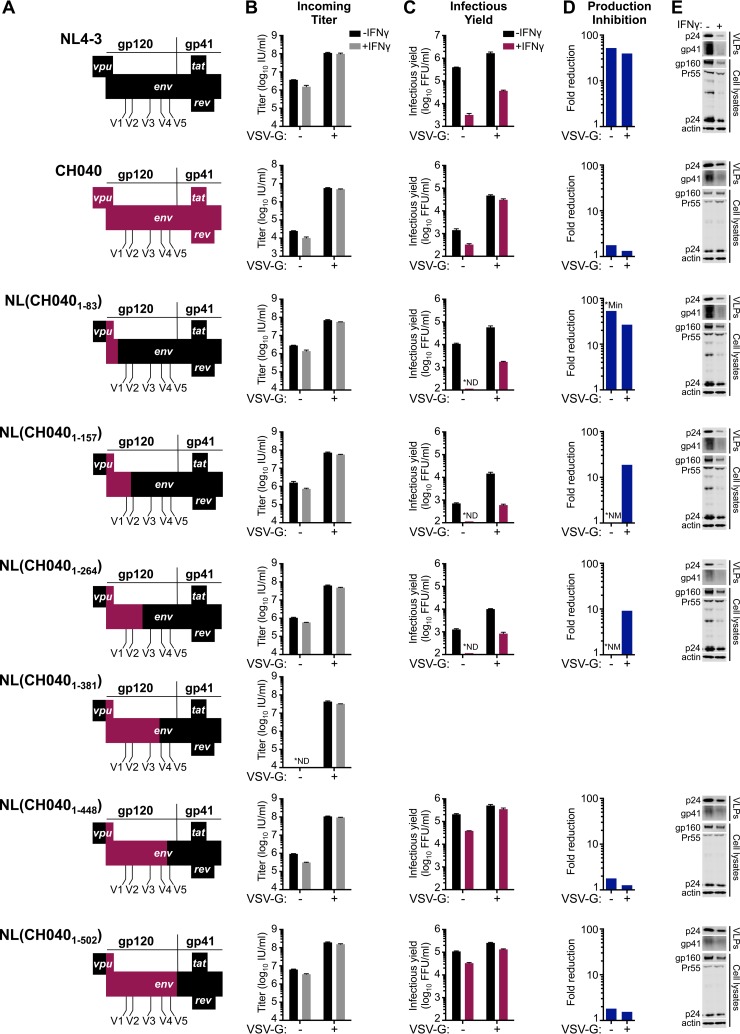FIG 8.
Sensitivity/resistance to the late IFN-γ-induced block in MT4 cells maps to regions of env preceding V5. (A) Representations of the env chimeric and parental infectious molecular clones of NL4-3 and CH040 used in the experiments shown in panels B to E, with portions of NL4-3 shown in black and portions of CH040 shown in maroon. Portions of the chimeric clones not shown are derived from NL4-3. The incoming titer (B), the yield of infectious progeny (C), the mean fold reduction in infectious HIV-1 production (calculated as described in the legend of Fig. 5) (D), and the particulate supernatant capsid and gp41 and cellular Gag/capsid and gp160 were assessed using MT4-R5-LTR-GFP cells in the presence/absence of IFN-γ pretreatment (as well as VSV-G) (E), as described in the legend of Fig. 6. The Western blots shown in panel E are those from the VSV-G pseudotyped infections to ensure readily measurable Gag expression. pNL(CH0401–381) appeared to be reproducibly unable to produce infectious particles, as no infectious particles were detected in the infectious yield assay, and no incoming titer could be detected in the absence of VSV-G. *ND, not detectable; *NM, not measurable (due to not detectable portion of calculation); *Min, minimum possible amount of inhibition due to the undetectable portion of the calculation. All error bars indicate SEM (n = 3 to 5).

